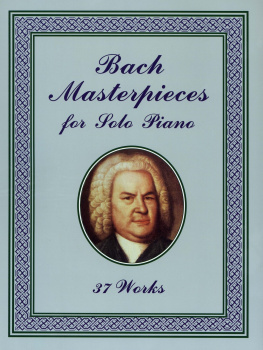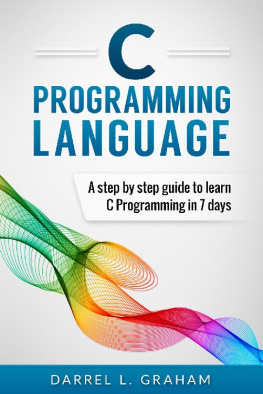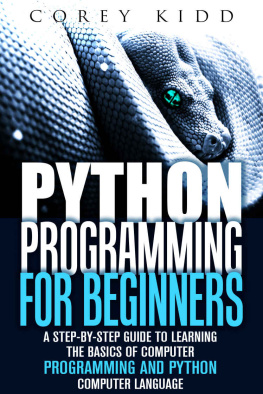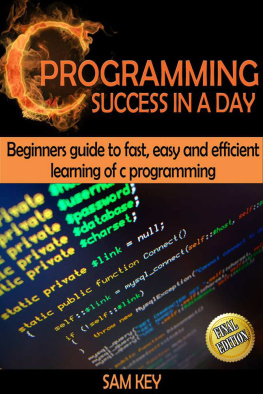Bach - C# Programming: A Step-by-Step Guide to Learn, in an Easy Way, the Fundamentals of C# Programming Language
Here you can read online Bach - C# Programming: A Step-by-Step Guide to Learn, in an Easy Way, the Fundamentals of C# Programming Language full text of the book (entire story) in english for free. Download pdf and epub, get meaning, cover and reviews about this ebook. year: 2020, genre: Computer. Description of the work, (preface) as well as reviews are available. Best literature library LitArk.com created for fans of good reading and offers a wide selection of genres:
Romance novel
Science fiction
Adventure
Detective
Science
History
Home and family
Prose
Art
Politics
Computer
Non-fiction
Religion
Business
Children
Humor
Choose a favorite category and find really read worthwhile books. Enjoy immersion in the world of imagination, feel the emotions of the characters or learn something new for yourself, make an fascinating discovery.

C# Programming: A Step-by-Step Guide to Learn, in an Easy Way, the Fundamentals of C# Programming Language: summary, description and annotation
We offer to read an annotation, description, summary or preface (depends on what the author of the book "C# Programming: A Step-by-Step Guide to Learn, in an Easy Way, the Fundamentals of C# Programming Language" wrote himself). If you haven't found the necessary information about the book — write in the comments, we will try to find it.
Bach: author's other books
Who wrote C# Programming: A Step-by-Step Guide to Learn, in an Easy Way, the Fundamentals of C# Programming Language? Find out the surname, the name of the author of the book and a list of all author's works by series.
C# Programming: A Step-by-Step Guide to Learn, in an Easy Way, the Fundamentals of C# Programming Language — read online for free the complete book (whole text) full work
Below is the text of the book, divided by pages. System saving the place of the last page read, allows you to conveniently read the book "C# Programming: A Step-by-Step Guide to Learn, in an Easy Way, the Fundamentals of C# Programming Language" online for free, without having to search again every time where you left off. Put a bookmark, and you can go to the page where you finished reading at any time.
Font size:
Interval:
Bookmark:
C #
Programming
A Step-by-Step Guide to Learn, in an Easy Way, the Fundamentals of C# Programming Language
st Edition
2020
By
John Bach
For information contact :
(alabamamond@gmail.com, memlnc)
http://www.memlnc.com
First Edition: 2020
C# Programming
Copyright 2020 by John Bach
memlnc
***
`
Table of contents
Introduction to C # and the .NET Framework
C # language
.NET Framework architecture
Creating Your First C # Application
To create a C # application
Create your first C # application
Create a C # Application
To create a C # console application
Create a C # console application
To create a C # Windows application
Building Windows Forms Applications in C #
Introduction to Windows Presentation Foundation
To create a WPF appli cation
Creating a WPF C # Application
To create event handlers
Creating event handlers
Designing a User Interface in Visual C #
Adding Controls
Creating a user interface in Visual C #
Adding controls
Setti ng Properties
Handling Events
Setting properties
Event handling
How to: Use Button Controls
Using the Button Control
To use buttons in a program
Using buttons in the program
How to: Call a Button's Click Event Programmatically
To use buttons in a program
Calling the button click event programmatically
Using buttons in the program
How to: Create a Group of Radio Buttons from a String Array
Create a radio button group from an array of strings
How to: Create a Non-Rectangular Button
How to: Display Text on a Window s Form
To display text in a label
Displaying Text on a Windows Form
Display text in a label
How to: Use TextBox Controls to Get User Input
Using the TextBox Control to Receive Input
To retrieve input typed in a text box
Retrieving data entered into a text field
How to: Convert the Text in a TextBox Control to an Integer
Convert text in a TextBox control to an integer
How to: Set the Selected Text in a TextBox Control
Setting Text Selection in a TextBo x Control
How to: Format Characters in a RichTextBox Control
Formatting Characters in the RichTextBox Control
How to: Load Text into a RichTextBox Control
Loading Text into the RichTextBox Control
Dialog Boxes
How to: Retrieve Data from a Dialog Box
Dialog boxes
Retrieving Data from a Dialog Box
To retrieve data from a dialog box.
How to: Browse a Folder
Browse folder
How to: Save a File to a Folder
To display the folder browser dialog box
Saving a file to a folder
How to: Display a List of Fonts
Displaying the font list
How to: Display an OpenFileDialog Dynamically
Dynamic display of the OpenFileDialog component
ListBox and ComboBox Controls
ListBox and ComboBox
Date and Time Controls
How to: Select a Range of Dates in a Calendar Control
Date and time display
Selecting a Date Range in the Calendar Control
Retrieving the Date in the Dat eTimePicker Control
How to: Display the Time in a Label
Time display in label
How to: Display the Date and Time in Your Application
Date and time display in the app
How to: Determine the Span Between Two Dates
Determining the interval between two dates
TreeView Controls
How to: Add Nodes to a TreeView Control
How to: Add Nested Nodes to a TreeView Control
TreeView controls
Adding Nodes to the TreeView Control
Adding Subnodes to the TreeView Control
Adding a Node to the Selected Node of the TreeView Control
Creating a Custom UI
How to: Add Toolbars to a Windows Forms Application
Creating a custom user interface
Adding Toolbars to a Windows Forms Application
To add a set of standard toolbar button
How to: Create a Tooltip for a Control
Creating a tooltip for a control
How to: Create a Sho rtcut Menu and Attach it to a Control
Create a context menu and attach it to a control
How to: Add Win dows Forms Controls at Run Time
Adding Windows Forms Controls at Run Time
Accessing and Displaying Data
How to: Write Class Data to an XML File
Access to data and their display
Writing class data to XML file
How to : Read XML from a File
Reading XML from a file
How to: Read Class Data from an XML File
Reading class data from XML file
Drawing Text and Graphics
How to: Draw Text on a Form
Drawing text and graphics
Rendering text on a form
Change the color of text in a Windows Forms control
Displaying Graphics Objects in Windows Forms
How to: Draw a Curve on a Form
Draw a curve in a shape
How to: Draw Outlined Shapes
Drawing outline shapes
How to: Draw a Line on a Form
Drawing a line in a shape
How to: Draw a Filled Rectangle on a Form
Draw a filled rectangle in a shape
How to: Draw a Filled Ellipse on a Form
Draw a filled ellipse in a shape
Adding Multimedia to an Application
How to: Embed Windows Media Player on a Form
Adding media files to the app
Embedding Windows Media Player on a Form
How to: Play Sounds in an Application
To play an audio file
Play audio in the app
Creating and Using Bitmaps and Icons
How to: Create a Bitmap at Run Time
Create and use bitmaps and icons
Creating a bitmap at run time
How to: Convert Images from One Format to Another
Convert images from one format to another
Customizing, Displaying, and Printing Wi ndows Forms
How to: Change the Background Color of a Form
How to: Create a Shaped Form
Customizing, Displaying, and Printing Windows Forms
Change the background color of a form
Complex shape creation
How to: Get a Value from Another Form
Getting a value from another form
How to: Display One Form from Another
Display one form from another
Creating WPF Applications
Designing a User Interface for a WPF Application
Building WPF Applications
Creating a UI for a WPF Application
To create a WPF application
Common WPF Controls
WPF Standard Controls
How to: Create Event Handlers for WPF Controls
Creating Event Handlers for WPF Controls
Connecting to Data
How to: Connect to a Database
To add a connection to the Northwind database
The Data Source Configuration Wizard opens.
Data connection
Database connection
Adding a connection to the "Northwind" database
How to: Display Related Data on a Form
To display related data on a form
Displaying related data in a form
Displaying related data in a form
Using LINQ in C # Express
Advantages of Using LINQ
Using LINQ in C # Express
Benefits of using LINQ
C # Language Enhancements that Support LINQ
C # language extensions to support LINQ
Writing LINQ Queries
LINQ to Objects
Writing LINQ Queries
C # Language Primer
Inside a C # Program
Hello World, C # Style
C # language for beginners
C # program structure
"Hello World" in C # style
using Directives and Namespaces
Comments
Directive using and Namespaces
Notes
Classes
Main ()
 Classes
Classes
Main ()
Console Input and Output
 Console input and output
Console input and output
Program Structure and Flow of Execution
Next pageFont size:
Interval:
Bookmark:
Similar books «C# Programming: A Step-by-Step Guide to Learn, in an Easy Way, the Fundamentals of C# Programming Language»
Look at similar books to C# Programming: A Step-by-Step Guide to Learn, in an Easy Way, the Fundamentals of C# Programming Language. We have selected literature similar in name and meaning in the hope of providing readers with more options to find new, interesting, not yet read works.
Discussion, reviews of the book C# Programming: A Step-by-Step Guide to Learn, in an Easy Way, the Fundamentals of C# Programming Language and just readers' own opinions. Leave your comments, write what you think about the work, its meaning or the main characters. Specify what exactly you liked and what you didn't like, and why you think so.

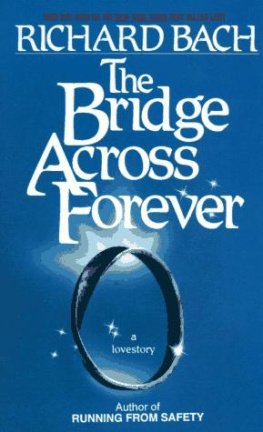

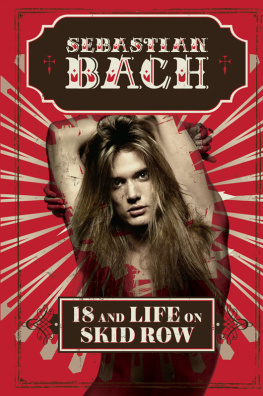
![Bach - Illusions: [the adventures of a reluctant Messiah]](/uploads/posts/book/179326/thumbs/bach-illusions-the-adventures-of-a-reluctant.jpg)

